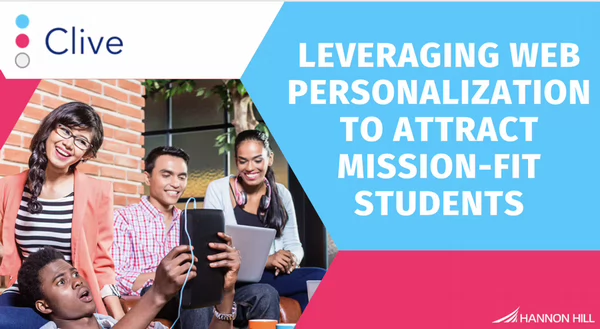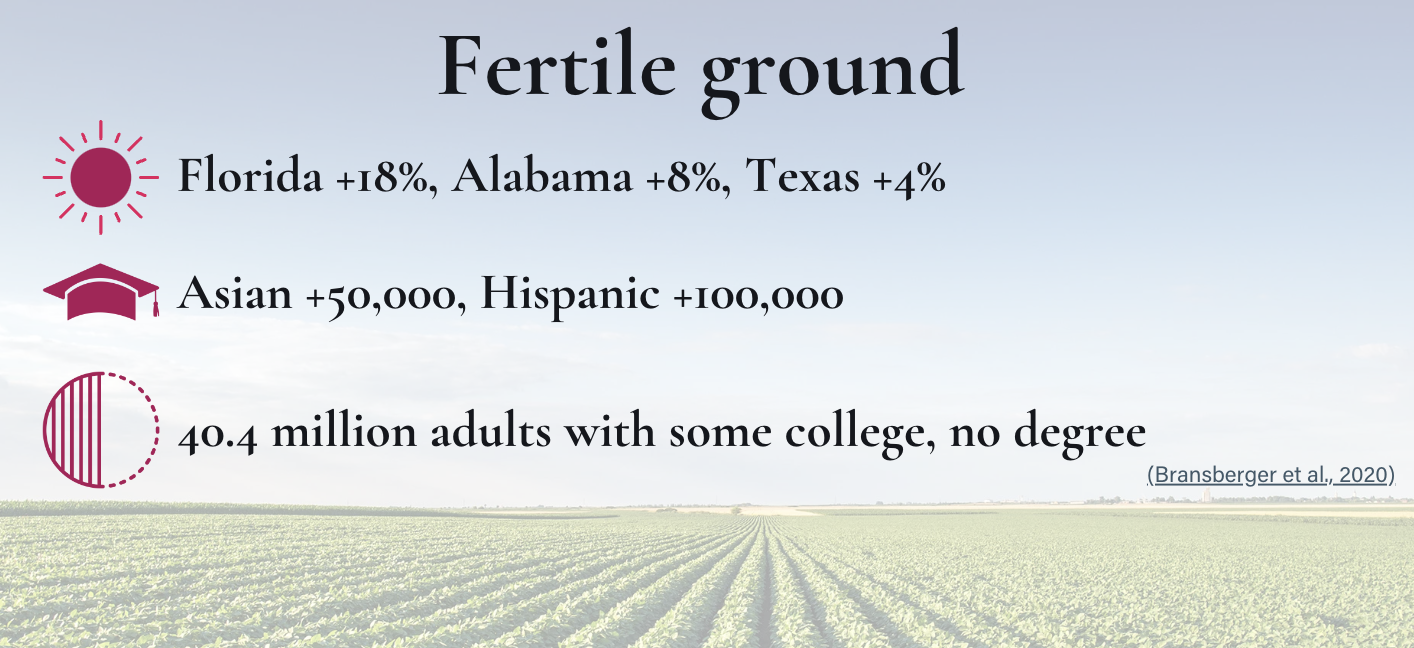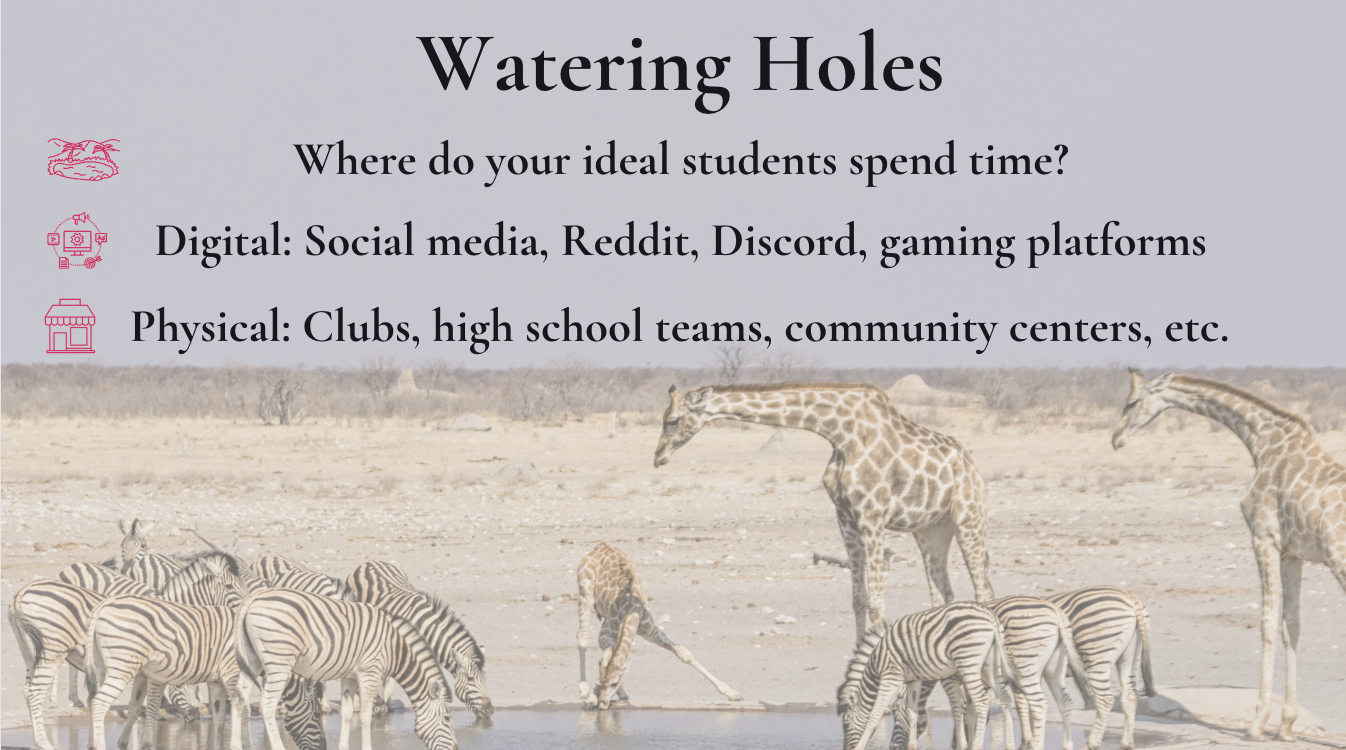
Hannon Hill kicked off its 2024 webinar series with a co-presentation titled:
"Maximizing Enrollment: Leveraging Web Personalization to Attract Students"
The webinar provided a comprehensive exploration of strategies to attract and engage prospective students in the face of demographic shifts and changing digital behaviors.
Hannon Hill's Marketing Specialist, Chris Rapozo, alongside guest Bart Caylor from Caylor Solutions and author of "Chasing Mission Fit," shed light on the critical aspects of navigating the demographic enrollment cliff, identifying and engaging mission-fit students and the pivotal role of digital personalization in enhancing the student recruitment process.
In the opening segment of the webinar, Rapozo tackled the critical issue facing higher education:
The Demographic Enrollment Cliff
This phenomenon, precipitated by demographic changes and economic downturns, particularly the Great Recession of 2008, is leading to a sharp decline in the number of traditional college-aged students.
Rapozo highlighted the projections made by the Western Interstate Commission of Higher Education, noting significant geographic and demographic shifts in student populations expected between 2025 and 2037.
With the Northeast and Midwest expected to face the brunt of these declines, Rapozo stressed the urgency for higher education institutions to adapt by exploring new demographics, such as the growing Hispanic and Asian student populations, and tapping into the pool of over 40 million adults with some college but no degree.

"But just because they're there doesn't mean they'll come to your institution," Rapozo said.
"Figure out how to find those students who align with your mission," so you don't only enroll them but also retain them.
But where does one find such students?
Caylor explored the crucial process of discerning students who align with an institution's core values and mission.
He emphasized that understanding the institution's unique identity is foundational before identifying mission-fit students.
"Before you figure out who your mission fit students are, you have to know who you are as an institution," Caylor said.
Institutions can clarify their mission, values, and unique selling propositions through branding and persona exercises.
Caylor suggests leveraging insights from current students, alumni, and especially those about to graduate, as they exemplify mission-fit individuals.
He introduces the concept of "watering holes" — digital and physical spaces where prospective students gather — as vital for engagement.

This approach underscores the importance of knowing where these students spend their time to tailor outreach effectively.
Caylor highlights that each student generation, including Generation Alpha and Gen Z, has distinct expectations and preferences, necessitating tailored communication strategies.
Identifying and engaging with students in their preferred environments acknowledges student populations' diversity and changing dynamics.
Sounds simple.
Also sounds like a lot of work if you have to revamp your marketing approach to serve new demographics, and a lot of work often means a strained marketing budget.
But it doesn't have to be.
Caylor shares practical strategies for higher education institutions to optimize their marketing efforts without the need for substantial budgets.
He underscores the importance of focusing on mission-fit students and influencers to streamline marketing efforts, making a compelling case for precision over breadth in targeting audiences.
Caylor emphasizes the role of content as the cornerstone of a cost-effective marketing strategy, advocating for a digital-first approach that leverages generative AI tools like ChatGPT to enhance productivity and content creation.
Caylor also outlines seven hacks from his book for marketing on a tight budget, including:
A key takeaway from this segment is the power of targeted, content-driven marketing strategies to effectively reach and engage mission-fit students and lead them to your website.
Rapozo underlines the urgent and pivotal role of a university's digital presence in the current higher education landscape, stressing that it's a matter of immediate concern.
He outlines the importance of addressing three fundamental questions prospective students and their parents have:
"Your website these days is like an admissions counselor working 24/7/365, and it's your most important asset in 2024," Rapozo said.
He stresses that a university's website must make a positive and immediate impression, catering to the diminished attention spans of generations Alpha and Z, who decide whether a site meets their needs within seconds.
Highlighting the importance of a user-focused design, Rapozo suggests that websites should be clear, serve specific needs, answer relevant questions, tell compelling stories, showcase social proof through testimonials, and ensure content is easily accessible across all devices.
Additionally, he advocates for smart content personalization to enhance user experience, noting that most online users expect and are influenced by personalized content.
In the final part of the webinar, focusing on website personalization, Rapozo highlights how essential personalization has become, moving from a nice-to-have to an expected feature by today's higher education website visitors.
He introduced Clive, Hannon Hill's web personalization tool, as a key resource for effectively achieving such personalization.
Clive enables implicit and explicit personalization, allowing higher-ed marketers to tailor content based on visitor behavior and directly provide information, enhancing the user experience significantly.
Rapozo explained, "When it comes to website personalization, it's no longer nice to have. It's actually an expectation," emphasizing the importance of serving each visitor's needs.
He outlines how Clive can detect visitor data through geolocation and digital body language to deliver personalized content, such as specific programs, tuition assistance, and more, tailored to the prospective student's interests and needs.
Moreover, Rapozo shares success stories of institutions like the University of New Mexico, College of Pharmacy, which saw a significant increase in applications and enrollment through targeted personalization strategies.

Clive's ability to integrate seamlessly with Cascade CMS or function with other content management systems makes it an invaluable tool for higher-ed professionals aiming to create an enrollment-driven website.
The webinar "Maximizing Enrollment Leveraging Web Personalization to Attract Students" underscores the necessity of website personalization in today's higher education landscape.
Through the insights shared, it's clear that tools like Hannon Hill's Clive are vital for engaging prospective students effectively by providing tailored content.
Clive's capabilities in enhancing digital interactions make it a must-have for any institution looking to boost enrollment figures.
If you'd like to explore Clive's transformative potential on your website, regardless of CMS, complete the form below to request a discovery call.
Last Updated: Mar 28, 2024 11:00 AM